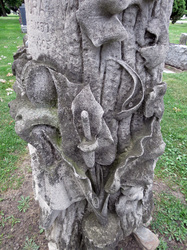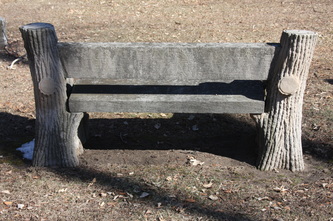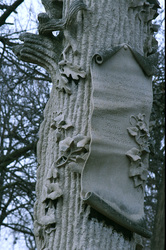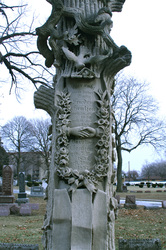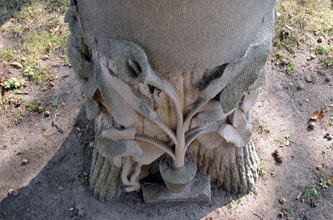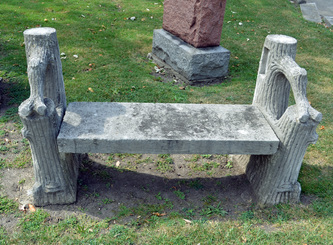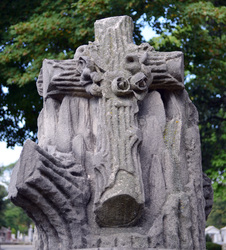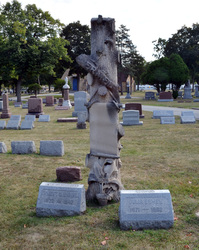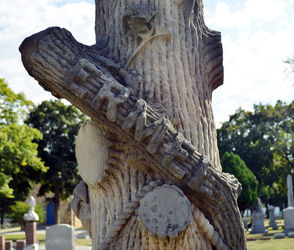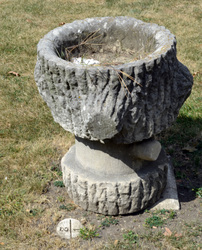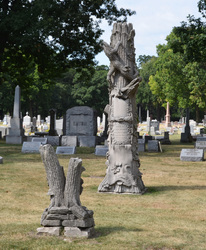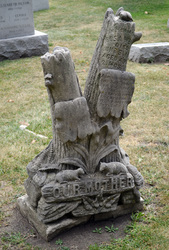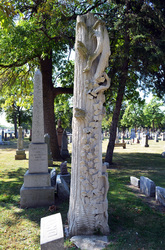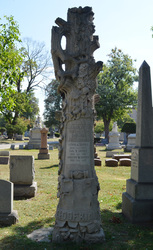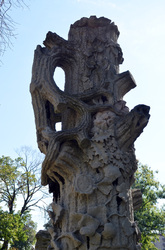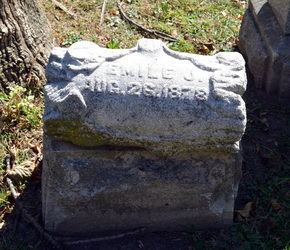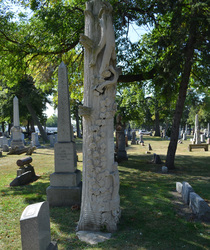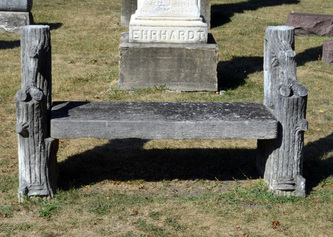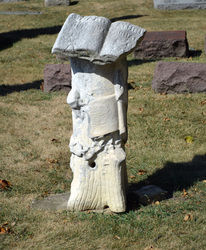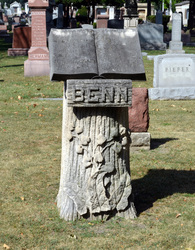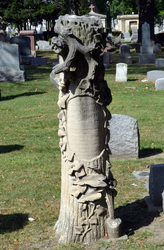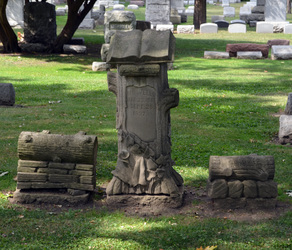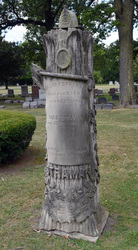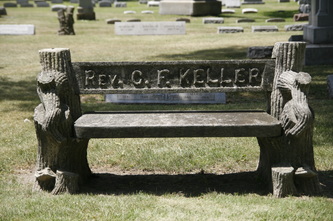Rustic Gravestones
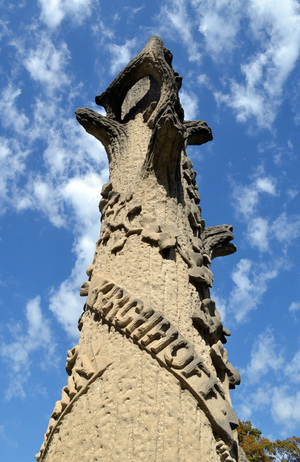
Tree stump tombstones, generally carved from limestone, were a part of the rustic movement of the mid-nineteenth century which was characterized by designs that were made to look like they were from the country. The gravestones are purposefully designed to look like trees that had been cut and left in the cemetery which was part of the movement to build cemeteries to look like parks. In funerary art, the tree-stump tombstones were varied—the stonecutters displayed a wide variety of carvings.
The tree-stump gravestones themselves were imbued with symbolism. The short tree stump often marks the grave of a person who died young—a life that had been “cut” short. There is an ivy trailing up the front of the stump. The ivy represents friendship and, like many symbols found in the cemetery, immortality.
Woodmen of the World popularized this style of gravestone from 1900 to mid 1920's. Through the organization members would receive a gravestone. WOW designed a four to five foot high tree trunk monument pattern for adults and three stacked logs for children. WOW would send a copy of the pattern to the local stone carver in the deceased woodman’s hometown, so that all of the tree stones would be similar in appearance. Many times, the tree stone pattern was altered; sized differently, cut in a different manner, or branches were added or broken off each time a family member was buried. Each piece was individualized with different decorations. By the mid 20's, the organization had discontinued the grave marker benefit due to the increased cost of the stones.
WOW later created a simpler template of a log that would rest atop a regular gravestone. The WOW motto “Dum Tacet Clamet,” meaning, “Though silent, he speaks” was inscribed on the log. Members could order the log to be placed on a deceased woodman’s regular grave marker. A woodman emblem is now available and can be attached to a regular gravestone.
The tree-stump gravestones themselves were imbued with symbolism. The short tree stump often marks the grave of a person who died young—a life that had been “cut” short. There is an ivy trailing up the front of the stump. The ivy represents friendship and, like many symbols found in the cemetery, immortality.
Woodmen of the World popularized this style of gravestone from 1900 to mid 1920's. Through the organization members would receive a gravestone. WOW designed a four to five foot high tree trunk monument pattern for adults and three stacked logs for children. WOW would send a copy of the pattern to the local stone carver in the deceased woodman’s hometown, so that all of the tree stones would be similar in appearance. Many times, the tree stone pattern was altered; sized differently, cut in a different manner, or branches were added or broken off each time a family member was buried. Each piece was individualized with different decorations. By the mid 20's, the organization had discontinued the grave marker benefit due to the increased cost of the stones.
WOW later created a simpler template of a log that would rest atop a regular gravestone. The WOW motto “Dum Tacet Clamet,” meaning, “Though silent, he speaks” was inscribed on the log. Members could order the log to be placed on a deceased woodman’s regular grave marker. A woodman emblem is now available and can be attached to a regular gravestone.
